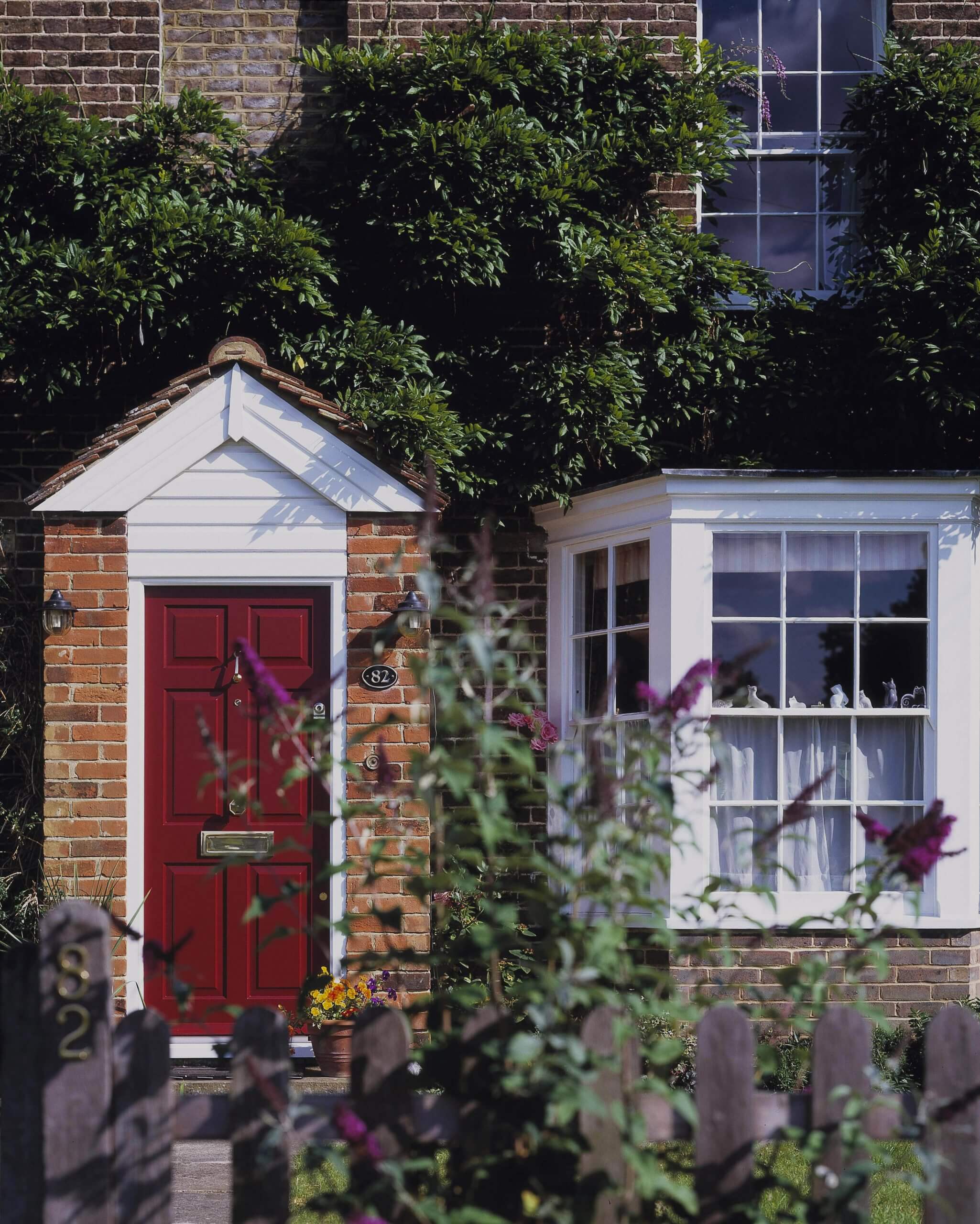Traditional Georgian windows are an iconic feature of Georgian architecture, which flourished from 1714 to 1830 during the reigns of the British monarchs George I through George IV. This architectural style is revered for its symmetry, proportion and balance, qualities that are distinctly embodied in the Georgian window. These windows are not only a testament to the aesthetic values of the era but also reflect the technological and cultural shifts of the time.
The Design of Georgian Windows
Georgian windows are best known for their elegant simplicity and symmetrical design. Typically constructed as sash windows, they consist of one or more movable panels or “sashes,” that form a frame to hold panes of glass. The most distinguishing feature of a Georgian sash window is the “six over six” pane arrangement—two rows of three panes over another two rows of three panes. However, variations like “nine over nine” or “twelve over twelve” were also prevalent, depending on the size of the window and the status of the building.
The proportions of Georgian windows are a key aspect of their design. The height of the windows often exceeds their width, lending a graceful verticality to the façade of Georgian buildings. This vertical emphasis was further enhanced by positioning the windows flush with the brickwork, rather than recessed, giving the buildings a flat, even appearance, in line with the Georgian preference for restraint and uniformity.
Materials and Construction
In the early part of the Georgian period, window glass was a luxury and the glass panes used were relatively small due to manufacturing limitations. As a result, the multi-pane design was not just an aesthetic choice but a practical solution. The frames were typically made from wood, with softwoods being commonly used, although the wealthier might opt for more durable hardwoods. The glazing bars that held the panes in place were originally quite thick, but as glass-making technology improved, they became progressively thinner, allowing more light into interiors and providing better outside views.
The advancement in glass production during the Industrial Revolution had a significant impact on window design. The Cylinder glass method, developed in the 1830s, allowed for the production of larger panes of glass. This eventually led to the decline of the small-paned Georgian window in favor of larger, single-pane designs that characterized the later Victorian windows.
Historical Context and Significance
Georgian architecture and its windows reflect the Enlightenment’s ideals of clarity, light and reason. The design of Georgian windows allowed for maximum light, which was ideal for the interiors of the time, emphasizing cleanliness and order. This was in stark contrast to the heavier, darker baroque styles that preceded the Georgian period.
The uniformity of Georgian windows also speaks to the period’s emphasis on social order and structure. Windows in Georgian buildings were often aligned horizontally and vertically across façades, creating a rhythmic and uniform appearance that mirrored the societal aspirations of harmony and order.
Noteworthy Examples and Variations
Across Britain and its then-colonies, Georgian windows graced everything from grand palaces to modest townhouses. The Royal Crescent in Bath is one of the finest examples of Georgian architecture, where numerous properties feature the classic six over six sash windows. Another prominent example is Dublin’s Georgian doors, which are often flanked by beautifully detailed Georgian windows, contributing to the character of the city’s historic districts.
In the United States, Georgian style was adapted in various colonial homes, where the windows sometimes featured a slight variation in pane layout due to different aesthetic influences and practical considerations such as climate.
Preservation and Legacy
Today, Georgian windows are an important aspect of historic preservation. In cities with rich Georgian legacies, these windows are often restored to maintain the architectural integrity of buildings. The process of restoring Georgian windows can be painstaking, as it involves matching historical materials and craftsmanship techniques to preserve their original appearance and function.
The legacy of Georgian windows extends beyond their visual appeal; they represent a period of significant cultural, technological and aesthetic development. They are studied not only for their beauty and craftsmanship but also for what they tell us about the history of architecture, technology and social order.
Installation and Modern Adaptations
Georgian windows have found a place in both historical renovations and modern constructions. When adding Georgian windows to a contemporary building, architects will often employ double-glazing to meet today’s energy standards while preserving the aesthetic qualities of the traditional design. Such adaptations allow for enhanced thermal insulation without compromising the visual integrity of the property.
Additionally, modern materials such as uPVC can be fashioned to mimic the appearance of original wooden frames, offering longevity and ease of maintenance. These adaptations ensure that Georgian windows can meet modern building regulations while maintaining their historical character.
Maintenance and Care
Maintaining Georgian windows is crucial to preserving their aesthetic and functional integrity. Regular cleaning of the glass and frames, using non-abrasive materials, helps prevent the build-up of dirt that can lead to wood decay. It is also important to inspect the sash cords and pulleys periodically, as these are prone to wear and may require replacement to keep the windows operating smoothly. For wooden frames, treating with a suitable preservative can prevent rot and extend the lifespan of the windows. Owners of Georgian properties must also be vigilant for signs of moisture ingress, which can damage the historic fabric of the window structures.
Technological Advancements in Window Design
Since the Georgian era, the design and manufacturing of windows have evolved significantly, influenced by technological advancements. The introduction of the float glass process in the mid-20th century allowed for the production of larger, flawless panes of glass, reducing the need for the multiple panes seen in Georgian designs. Today, advancements in materials science have led to the development of high-performance glazing that offers superior thermal and acoustic insulation, UV protection, and enhanced security. These modern glasses can be incorporated into Georgian-style frames to provide the benefits of contemporary technology while retaining the traditional aesthetics.
Regulatory and Legal Considerations
The installation or alteration of Georgian windows in listed buildings or conservation areas in the UK is often subject to strict regulatory and legal considerations. Property owners must typically seek consent from local planning authorities before undertaking any work that affects the character of a listed property. This includes the replacement of windows, where the aim is to replicate the original designs as closely as possible using traditional materials and methods. Understanding these legal frameworks is essential for property owners to ensure compliance and avoid potential penalties. Additionally, these regulations help preserve the architectural heritage of Georgian windows, ensuring they continue to enhance the UK’s historical landscapes.







